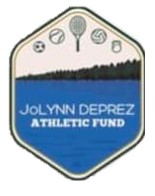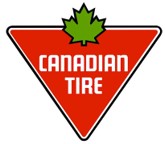Frequently Asked Questions About Curling
1. How much do those curling stones weigh?
Regulation stones weigh between 38 and 44 pounds, with 42 pounds being the standard weight. Sounds like a lot, we know, so it’s a good thing we only have to slide them across the ice and not lift them.
2. How much do curling stones cost?
Brand new curling stones cost between $500 and $900 each. Refurbished stones cost about $450 each, and used stones cost between $200 and $350 each, depending on condition and type of granite.
3. How does the scoring work?
We’re going to refer you to the Curling page on this one. Towards the middle of the page, it has nice pictures to clearly explain the scoring.
4. Are you the thrower or the sweeper? / Who throws the stone, and who sweeps?
We can’t emphasize enough our Curling 101 page, it does answer a lot of FAQs. But, since you are here asking, the answer is…both/everyone. Each player delivers two stones, alternating with the other team, so the Lead for Team 1 throws their first stone, then the Lead for Team 2 throws their first stone. Next the Lead for Team 1 throws their second stone, then the Lead for Team 2 throws their second stone. Now it is the Second’s turn, then the Third/Vice Skip’s turn, and finally the Skip’s turn, until all 4 players on each team have delivered all stones. When you’re not delivering a stone, you are sweeping for the person who is delivering, except for the Skip, who is at the other end of the playing sheet, calling the strategy and placing their broom where they want the thrower to aim. When the Skip is delivering their two stones, the Third/Vice Skip holds the broom for where the Skip is to aim.
5. Am I too old/young to start curling?
Not at all! There are curlers of all ages. Typical age to be able to deliver a 38-44 pound stone the length of the ice is around 13 and people have played well into their 90’s. There have been stories of teams made up of 4 generations of a family. There are smaller stones for children under 13.
Do I have to buy anything special to play? No, much like bowling, where you can use a house ball and rent bowling shoes, we provide all the things you need to play. You can buy your own curling broom and shoes at a later time, if you wish to do so.
6. What clothes should I wear?
Loose fitting, athletic clothing is best. Jeans can be restrictive when delivering a stone. Wear clothing in layers, as you may want to remove some layers as you warm up during play. Avoid clothing that contains “fuzzies” such as fleece jackets. These fuzzies can fall on the ice and impede a stones travel, causing it to “pick” and go off its intended course. Also, wear athletic shoes with a soft, clean, rubber sole, preferably a pair of shoes used only for curling. Dirt brought in on shoes from the outside can fall off onto the ice, and cause a stone to “pick.”
7. What are you sweeping in front of the rock? There’s nothing in front of the rock.
Most of the time there is nothing in front of the rock, but occasionally there might be a hair, piece of fuzz or dirt in the stone’s path that can cause the stones to “pick” and go off its intended course; however, “cleaning” is the second reason we sweep. The primary reason we sweep is to control the distance and how much the stone curls (curves). A curling stone will not go straight, they always curl one way or the other (hence the name of the sport), and sweeping in front of the stone will warm and polish the ice, making the stone stay straighter (curl less). It also allows the stone to travel further by maintaining its momentum. It never makes the stone go faster, that goes against the laws of physics. It just does not slow down as fast.
8. What do you do to the ice? What is pebbling? Why do you pebble the ice?
Pebbling is a key part of preparing a sheet of ice for each curling game, and refers to when small droplets of water are sprayed onto the ice. They freeze almost immediately, creating small bumps of water that the curling stone slides over. This pebbling helps the curling stone slide easier than if the ice surface was smooth. Think of the sand on a shuffleboard and how the puck rides on top of the sand. It’s a similar concept. The curling action of the rocks also changes during the game as the pebble evens out from wear from the sweeping.
9. Isn’t curling just shuffleboard on ice?
The only similarities are that you are sliding an object down a surface, but that’s where the similarities end. There’s not as much strategy in shuffleboard. In curling you are thinking several moves ahead, much like in chess. You have to read what the ice is doing, like reading the greens in golf. Then there is the physical aspect of curling. We don’t know of too many people who break a sweat playing shuffleboard. Also, in a typical game, you walk between 1.5 and 2 miles.
10. What is the origin of curling. Is it a Canadian sport?
It’s a Scottish sport, actually, and it apparently began as a dispute of policy between two Scottish monks in the early 1500s. We’re dead serious. The Canadians are just really good at it.
11. What is with the time clocks? In casual play, there are no time clocks. In national and international competition, each team has 73 minutes to complete a 10-end game. The clock starts after the opposing team delivers a stone, and all stones in play have stopped moving and control of the house has been given over to the other team. If a team’s 73 minutes runs out before the end of a 10-end game, that team forfeits the game, even if they are winning. Each team is given a single timeout. There is a 1-minute break between each end and 5-minutes at the 5th-end break. The clocks are stopped during these breaks.
12. Will I find it difficult to stay upright on the ice – I’m hopeless at skating?
Curling ice it not wet or greasy on the surface – so you shouldn’t find it difficult to keep your balance. When you are not delivering a stone, your shoes have rubber soles to grip the ice. Remember – curling does not involve skates.
13. How do you not fall down?
Curling ice is not the same as hockey or skating ice. Typical arena ice is perfectly flat and smooth, but curling ice has tiny little bumps on it. Before the games, the ice is prepared with a fine spray or tiny droplets of water (known as pebbling the ice), which freezes and creates tiny bumps known as the pebble. The pebble has a better grip than your common skating ice. The pebble also allows curling stones to travel across the ice. A curling stone will not move across smooth ice very well.
14. Do I need to know how to ice skate?
No, there are no skates used – or permitted – in curling! Curlers wear conventional shoes to curl, typically with rubber soles for better traction on the ice. When delivering a stone, the lead/slide foot has a Teflon slider that you slip on or step on. You may opt to buy curling shoes, which have the Teflon slider built into it, at a later date. Curling shoes come with a rubber gripper that is placed over the slider when not delivering a stone.
15. I have health problems that prevent me from bending, or from performing a “standard” curling delivery. Does that mean I can’t play?
No. There is something called “The Stick” that can be used to deliver a curling stone, where you walk instead of sliding, and releasing the stone before the hogline.
16. I’m in a wheelchair, what if there are not enough people in wheelchairs to form a league?
You would be able to join our regular leagues. There are ways to adapt our play to that situation.
17. Is curling in the Olympics?
Yes. Curling became an official medal sport in 1998 (Nagano, Japan), became wildly popular during the 2002 (Salt Lake City, USA), and expanded its popularity in the 2006 (Torino, Italy) and 2010 (Vancouver, Canada). It returns again in the 2014 (Sochi, Russia) Winter Olympics.
18. Can I be an Olympic curler?
Sure you can. There are two things you need to be an Olympic curler. First you need an in-depth understanding of the game. We have experienced curlers in our club that can help you with that. The second thing you need is a lot of practice time. Unfortunately we only have 2.5 hours of ice time for us to play our league games, and very few weeks of open curling for practice, so that much needed practice time is hard to come by. Our goal is to someday have enough members to build our own, dedicated curling facility, and have all the ice time we can handle.

























